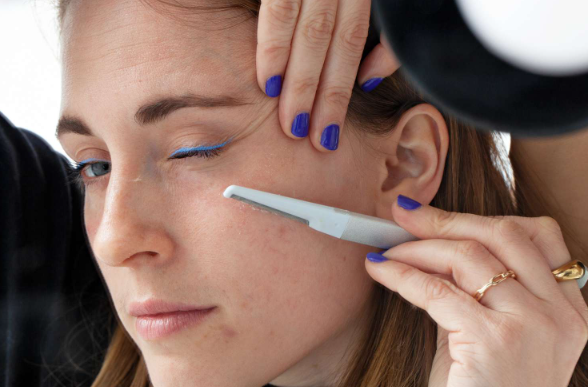Dermaplaning: Procedure, Benefits and Risks
Dermaplaning is a cosmetic procedure that involves using a sterile surgical scalpel to gently scrape the surface of the skin, primarily the face, to remove dead skin cells and fine vellus hair, commonly known as “peach fuzz.” This exfoliation technique is performed by trained skincare professionals, such as dermatologists or licensed aestheticians, and is becoming increasingly popular for its ability to promote a smoother and brighter complexion.
During a dermaplaning procedure, the skincare professional will hold the skin taut and use short, controlled strokes with the scalpel to gently remove the outermost layer of dead skin cells and fine hair. The procedure is usually painless and does not require any anesthesia.
It can be performed as a standalone treatment or combined with other skincare treatments, such as chemical peels or facials, to enhance their effectiveness. To get this procedure done, visit a Best Skin Specialist in Islamabad.
Benefits:
- Exfoliation: By removing the buildup of dead skin cells, dermaplaning helps to improve the skin’s texture and reveal a smoother, more youthful appearance. It also promotes better absorption of skincare products, as it eliminates the barrier created by the dead skin cells.
- Fairer complexion: The removal of the dull, dead skin cells can instantly brighten the complexion, giving the skin a healthy and radiant glow.
- Smoother skin: Dermaplaning helps to eliminate rough, uneven skin texture, leaving behind a smoother canvas.
- Hair removal: While the primary focus of dermaplaning is exfoliation, the procedure also removes fine facial hair. This can make the skin appear smoother and allow for better makeup application.
- Non-invasive: Dermaplaning is a non-invasive procedure that does not involve the use of chemicals or harsh ingredients. It is suitable for most skin types, including sensitive skin, and typically does not have any downtime.
However, it is essential to consider some factors and potential risks associated with dermaplaning:
- Temporary redness: After the procedure, some individuals may experience mild redness, similar to a sunburn, which typically subsides within a few hours.
- Sun sensitivity: Following dermaplaning, the skin may be more susceptible to sunburn. It is crucial to apply sunscreen and protect the skin from direct sun exposure.
- Not suitable for active acne or certain skin conditions: Individuals with active acne, open sores, or inflamed skin conditions may not be suitable candidates for dermaplaning. It is best to consult with a skincare professional to determine if the procedure is appropriate for your skin.
- Rare risks: While extremely rare, there is a minimal risk of infection, scarring, or cuts if the procedure is not performed correctly or in an unsterile environment. It is essential to choose a reputable professional and ensure proper hygiene during the treatment.
Conclusion:
Dermaplaning is a popular exfoliation technique that involves using a surgical scalpel to gently scrape away dead skin cells and fine facial hair. It can provide immediate benefits of smoother, brighter skin with no downtime. However, it is important to consult with a skin specialist to determine if dermaplaning is suitable for your skin type and to discuss any potential risks or concerns.
